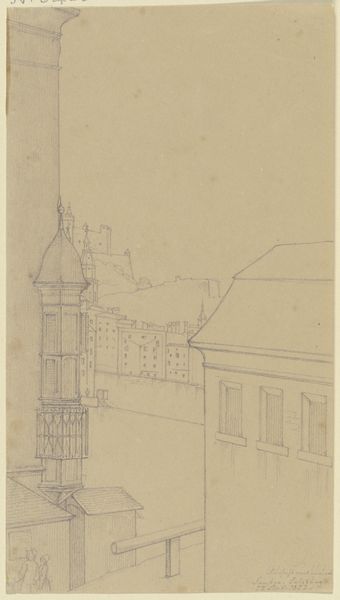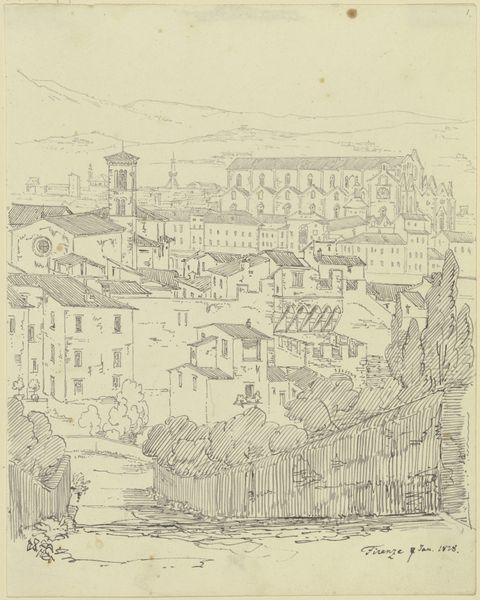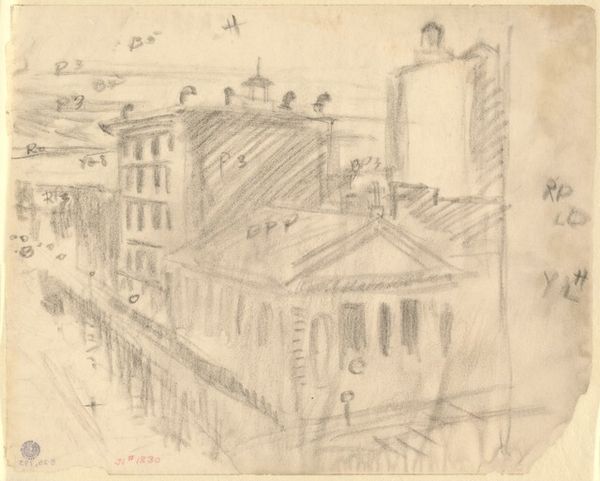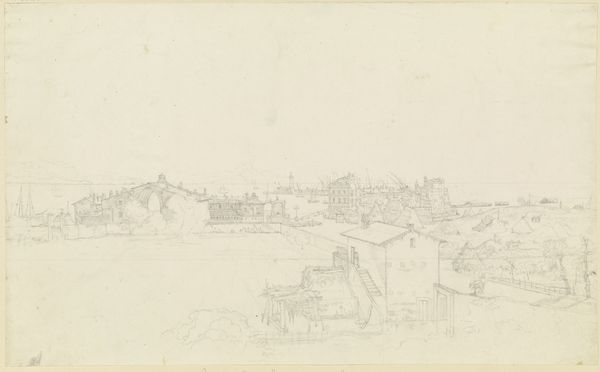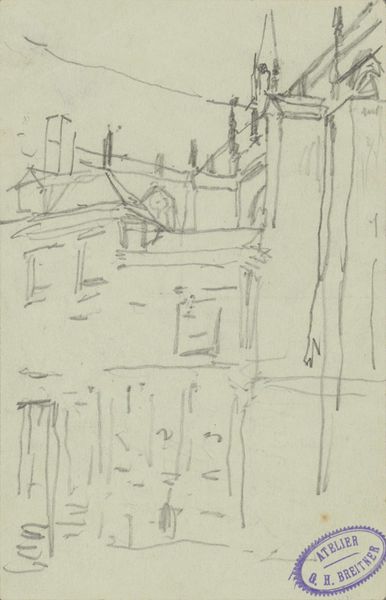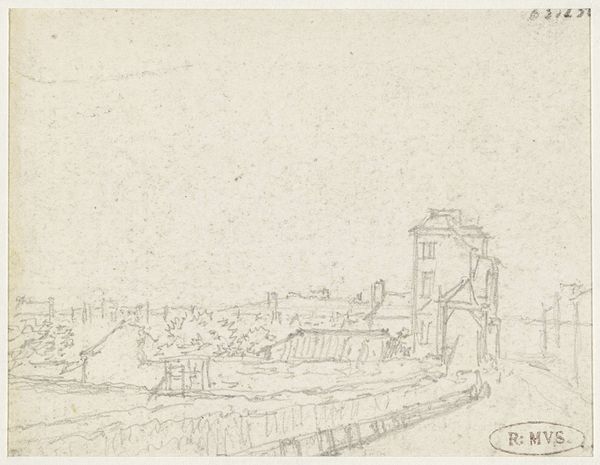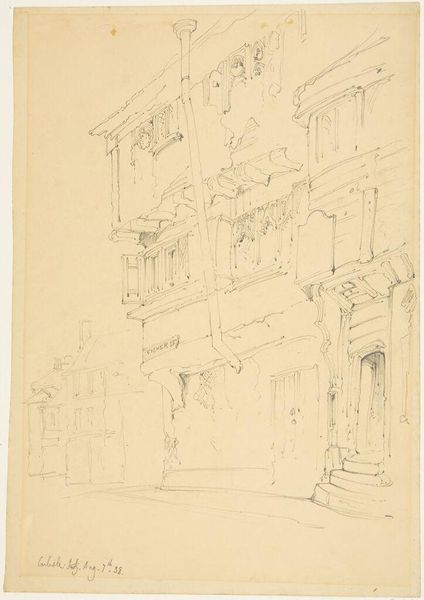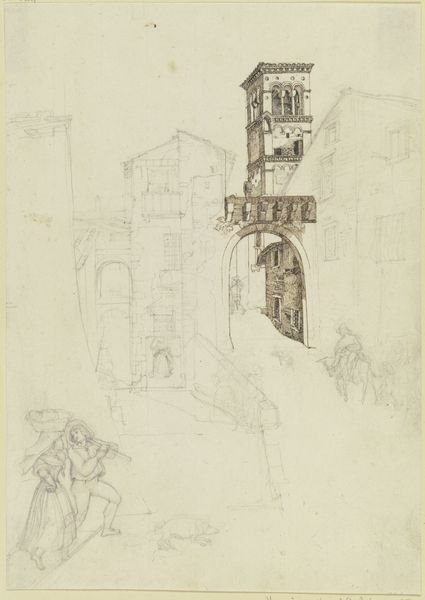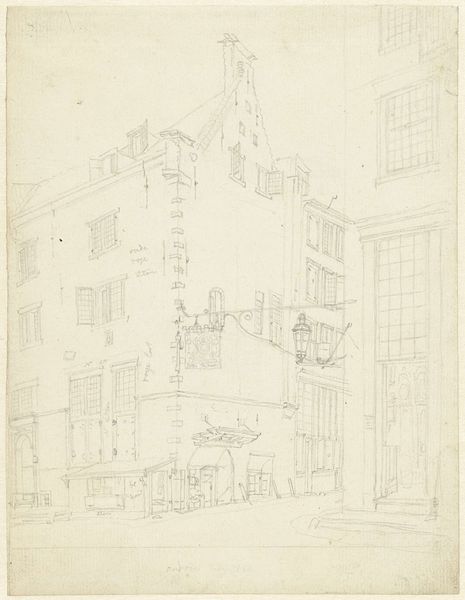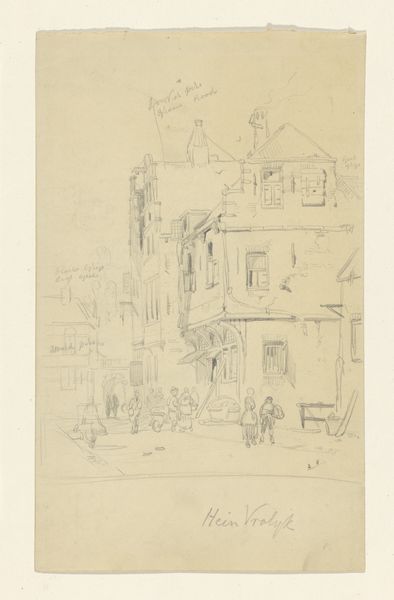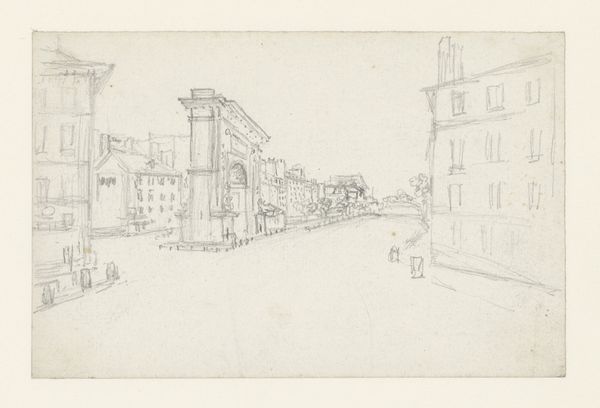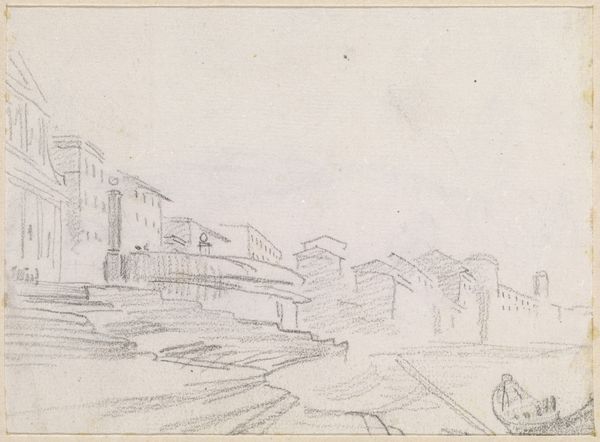
drawing, plein-air, pencil, architecture
#
drawing
#
16_19th-century
#
plein-air
#
landscape
#
pencil
#
cityscape
#
architecture
Copyright: Public Domain
Curator: Let’s delve into Julius Hamel’s "Blick auf die Dächer von Parma," a pencil drawing from 1869 currently held at the Städel Museum. Hamel captured this cityscape en plein air, offering us a glimpse into Parma's architectural landscape during that period. Editor: You know, my first impression is quietude. It’s a delicate sketch, like a whispered secret caught in the rooftops and fading light. The almost monochromatic quality adds to that sense of stillness. It feels like a memory fading at the edges. Curator: That quietude, I think, speaks volumes. The cityscape theme itself becomes a lens through which we can examine urban development, social stratification, and even the environmental impact of industrialization during the 19th century. These drawings are seldom politically neutral; they reveal or conceal at the artist’s discretion. Editor: I get that, totally. But look at the lines! The softness creates an ephemeral quality—it feels like the buildings might dissolve back into the sky at any moment. It’s like capturing a feeling, not just a place. It invites you to complete it in your own mind. You fill in the silence with your own narrative, you know? Curator: Exactly! And even in its apparent simplicity, the artwork prompts us to question the power dynamics inherent in how we perceive and represent urban spaces. Who is included, who is excluded, and how do those choices reflect broader social realities? These are essential questions to ask. Editor: I think it’s interesting you’re viewing this piece through what almost reads like an anthropologic lens. Meanwhile, to me, Hamel is whispering directly into the ear of anyone who's ever been alone with their thoughts in a beautiful, tranquil place. I think there’s tremendous universality in his seemingly plain sketch. Curator: And perhaps in the tension between those two approaches lies the most compelling dialogue. Understanding the historical and social contexts, while allowing room for personal and intuitive interpretations, creates a richer, more nuanced understanding. Editor: Right. It’s a beautiful little artwork that, on closer examination, speaks volumes about our relationship with space, time, and even memory. I like this so much more having this added dimension.
Comments
No comments
Be the first to comment and join the conversation on the ultimate creative platform.
